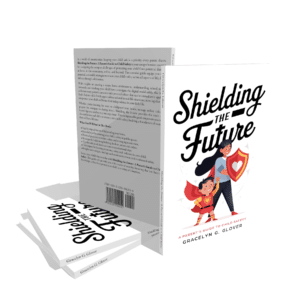Shielding the Future: Complete Guide to Child Safety and Protection for Modern Parents

Child safety has never been more complex in today’s rapidly evolving world of digital threats and modern parenting challenges. As a parent, you’re constantly balancing protection with independence, wondering if you’re doing enough to shield your children from both physical dangers and online risks. “Shielding the Future: A Parent’s Guide to Child Safety” delivers practical, actionable strategies that address every aspect of child safety from infancy through adolescence. This comprehensive guide stands apart from generic parenting advice by offering specific, real-world solutions for childproofing your home, protecting kids online, building emotional resilience, and creating safety protocols that actually work in today’s demanding family life.
Unlike overwhelming safety manuals that focus on fear-based approaches, this guide empowers parents with confidence-building strategies that foster independence while maintaining protection. The book addresses the unique challenges modern families face, from managing screen time and social media to dealing with cyberbullying and stranger safety in digital age contexts.
What You’ll Discover
- Complete Home Childproofing System: Step-by-step strategies to eliminate household hazards and create safe environments for every developmental stage
- Digital Safety Mastery: Learn proven methods to protect children online while teaching responsible internet usage and digital citizenship
- Emotional Resilience Building: Discover techniques to foster confidence, communication skills, and problem-solving abilities that help children navigate challenges independently
- School and Community Safety Protocols: Master effective strategies for ensuring safety during transportation, school activities, and community interactions
- Bullying Prevention and Response: Implement comprehensive approaches to prevent, identify, and address bullying situations both online and offline
- Emergency Preparedness Plans: Create family safety protocols and teach children age-appropriate emergency response skills for various scenarios
Why This Book Matters
Modern parenting requires navigating unprecedented safety challenges that previous generations never faced. This comprehensive child safety guide addresses the gap between traditional safety advice and contemporary parenting realities. Rather than creating anxiety, the strategies focus on empowerment through education, helping parents build confident, resilient children who can recognize and respond to potential dangers appropriately.
The book’s practical approach ensures immediate implementation of safety strategies without overwhelming busy families. Each chapter provides actionable steps that integrate seamlessly into daily routines, making child protection a natural part of family life rather than an additional burden.
Key Features
This comprehensive ebook spans multiple detailed chapters covering home safety, digital protection, emotional development, and community awareness. Available as an instant digital download, you’ll receive immediate access to practical worksheets, safety checklists, and implementation guides. The format allows for easy reading on any device, with printable exercises for hands-on practice with your children. Also available as audiobook on Google Play Books and Spotify for convenient listening during commutes or workouts.
Frequently Asked Questions
How does this child safety guide differ from other parenting books?
This guide focuses specifically on practical safety implementation rather than general parenting theory. It addresses modern challenges like digital safety, cyberbullying, and screen time management that many traditional safety books overlook, providing actionable strategies for today’s families.
Can these safety strategies work for children of different ages?
Absolutely. The book provides age-appropriate safety strategies from infancy through adolescence, with specific guidance for adapting techniques as children develop. Each strategy includes implementation tips for different developmental stages and family situations.
Is this book suitable for parents with limited time for reading?
Yes. The guide is designed for busy parents with practical, quick-reference sections and immediate action steps. The digital format allows reading in short segments, and the audiobook version enables learning during daily activities like commuting or exercising.
Get Your Copy Today
Transform your approach to child safety with this comprehensive guide. Available for instant download at just $6.99, this ebook provides exceptional value compared to expensive safety courses or consultations. Also available as audiobook on Google Play Books and Spotify. Purchase your copy through all major ebook retailers including Apple Books, Barnes & Noble, and Kobo to begin building confidence in your family’s safety strategy today.
Watch the Video Review

